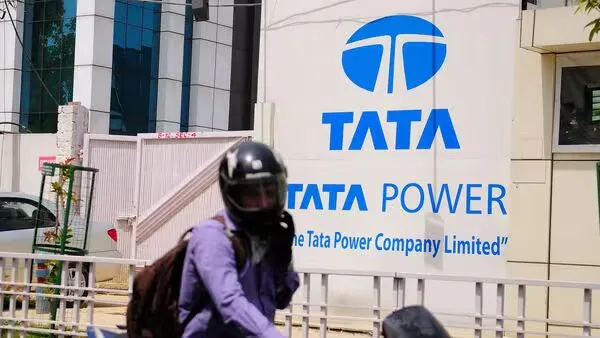Tata Power delivered impressive Q2 FY26 results on November 12, posting a strong 14% year-on-year profit increase to ₹1,245.39 crore alongside ambitious expansion plans that signal the company’s commitment to dominating India’s renewable energy landscape.
Table of Contents
Q2 FY26 Tata Power Performance Snapshot
| Financial Metric | Q2 FY26 | Q2 FY25 | Growth |
|---|---|---|---|
| Net Profit (PAT) | ₹1,245 crore | ₹1,093 crore | +14% |
| Revenue | ₹15,769 crore | ₹15,247 crore | +3% |
| EBITDA | ₹4,032 crore | ₹3,808 crore | +6% |
| EBITDA Margin | 25.6% | 25.0% | +60 bps |
The robust performance stemmed from strong growth across the company’s diversified business portfolio, with transmission and distribution segments leading the charge.

Game-Changing Announcement: 10 GW Solar Manufacturing
In a move that could reshape India’s solar manufacturing ecosystem, Tata Power announced plans to establish the country’s largest 10 GW solar wafer and ingot manufacturing facility. This strategic investment completes the company’s backward integration in solar value chain under the “Make in India” initiative.
Currently, Tata Power’s solar manufacturing units are running at full capacity with ALMM-listed modules and cells, positioning the company to reduce import dependence and strengthen domestic production capabilities. The company is evaluating multiple sites for this mega project that will significantly boost India’s solar component self-sufficiency.
Bhutan Hydro Partnership: ₹13,100 Crore Investment
Tata Power is doubling down on clean energy through strategic international partnerships. The company will invest ₹1,572 crore for a 40% equity stake in an SPV that will develop the 1,125 MW Dorjilung hydro power project in Bhutan, with total project cost estimated at ₹13,100 crore.
This follows the ongoing construction of the 600 MW Khorlochhu Hydro Project in Bhutan, strengthening regional energy cooperation and expanding Tata Power’s renewable portfolio beyond Indian borders.
Business Segment Highlights
Transmission Excellence: The transmission business recorded a remarkable 41% year-on-year PAT growth to ₹120 crore, while distribution segment PAT surged 34% to ₹557 crore, driven by operational efficiencies in Odisha Discoms.
Solar Leadership: The rooftop solar business maintained its market-leading position with 370 MWp additions during the quarter, reaching over 2.7 lakh installations and cumulative capacity exceeding 3.8 GWp.
Wind Power Boost: In a significant capacity expansion move, Tata Power signed an agreement with Suzlon Group for supply of 838 MW wind turbine generators across multiple states.

Leadership Vision
Dr. Praveer Sinha, CEO & Managing Director, emphasized the company’s strategic positioning: “Tata Power is well-positioned for expansion, with 10 GW of clean capacity under construction, including 5 GW of hybrid and FDRE projects in the pipeline”.
The company’s integrated business model continues delivering consistent results, with renewable energy now constituting 44% of total capacity as Tata Power accelerates toward its pre-2045 carbon neutrality target.
Future-Ready Energy Portfolio
With 10 GW of clean energy projects under construction and expanding distribution reach planned to serve 40 million consumers by 2030, Tata Power is solidifying its position as India’s leading integrated power company. The company’s focus on technology-driven transformation mirrors broader industry trends toward innovation and sustainability.
As India pushes toward ambitious renewable energy targets, Tata Power’s comprehensive strategy spanning manufacturing, generation, transmission, and distribution positions it at the forefront of the nation’s clean energy transition.
FAQs
Q: How will the 10 GW solar manufacturing plant impact India’s renewable sector?
A: The facility will make Tata Power the country’s largest solar component manufacturer, significantly reducing import dependence on wafers and ingots while creating thousands of jobs and supporting the government’s “Make in India” clean energy mission.
Q: What makes Tata Power’s Bhutan partnership strategically important?
A: The Bhutan hydro projects provide firm, dispatchable renewable energy—solving intermittency issues of solar and wind power. The 1,125 MW Dorjilung and 600 MW Khorlochhu projects together add 1,725 MW of reliable clean baseload capacity while strengthening regional energy security.








